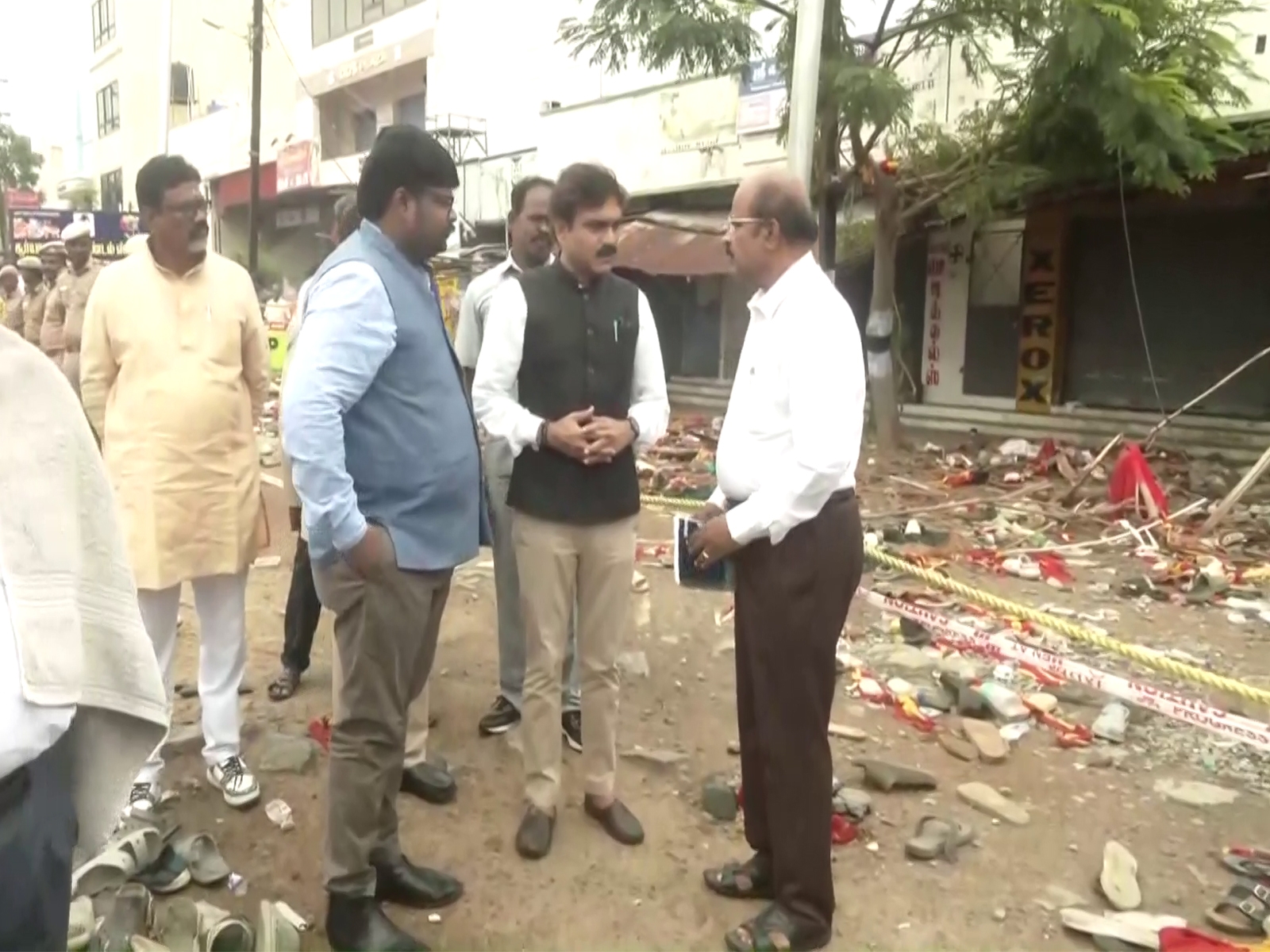Investors promise Bengal Rs 2.5 lakh crore. Is Mamata restoring lost glory?

The promise
- Mamata Banerjee\'s West Bengal government recently hosted the Bengal Global Business Summit
- The CM pleaded with business leaders to actively invest in the state
- They responded by promising investments worth Rs 2.5 lakh crore, excluding Central govt projects
The optimism
- Bengal finance minister Amit Mitra said \"Bengal is taking off\"
- Mukesh Ambani also urged fellow industrialists to invest in the state
More in the story
- Why there\'s real cause for optimism about the state\'s economy
- Why the World Bank has put Bengal 11th among Indian states in terms of \'ease of doing business\'
At the Bengal Global Business Summit 2016, West Bengal Chief Minister Mamata Banerjee pleaded with business leaders to actively invest in the state. She also assured investors that her party will win a second term in the state's upcoming assembly elections, and the government will act as an employee of those who invest.
And it looks like she was successful - according to media reports, the summit has seen promised investments worth Rs 2.5 lakh crore, excluding central government projects.
The summit has definitely attracted interest, which is clear from the list of attendees, which reads like a who's who of the establishment and industry.
The Bengal Global Business Summit was attended by a plethora of political and industry heavyweights
Union ministers Arun Jaitley, Nitin Gadkari, Suresh Prabhu and Piyush Goyal were among the attendees. Then, there were industry heavyweights like Mukesh Ambani, Sajjan Jindal, Sunil Bharti Mittal, Niranjan Hiranandani, Subhash Chandra, Mohandas Pai, Sanjiv Goenka and others. There were also top level representatives from South Korea, United Kingdom and Japan.
Real optimism or just talk?
When Mamata and the Trinamool Congress came to power in 2011, it was alleged that 34 years of Left rule had destroyed Bengal's once-vibrant economy. She was seen as a ray of hope. However, the first four years under her leadership did not show many signs of improvement.
Also read: Malda riot: Mamata's Muslim appeasement is coming back to haunt her
The state has been marked by political violence, organised extortion by party workers, the state's inability to stop closure of businesses, allegations against the Central government's freight equalisation policies and the state's huge economic debt.
But with elections just about two months away, are things changing?
Recently, Mamata's government came out with a full page newspaper advertisement, which stated that the state was doing better than the nationwide average in growth (gross value added), per capita income, industrial and agricultural growth.
This advertisement was backed up by cheerful statements from Ambani, who recommended that others invest in Bengal, and by Amit Mitra, the former FICCI secretary general and present finance minister of Bengal, who said "Bengal is taking off".
But is all this optimism well-founded? Is there actually potential in Bengal? The answer is largely in the affirmative. But it comes with a caveat: helping an economy recover from the effects of decades of mismanagement is not an easy task.
Ease of doing business
West Bengal now ranks 11th in 'ease of doing business' among Indian states, according to the World Bank. This can be touted as a huge improvement, because the Left era was noted for limited reforms and policy changes, lack of development and, towards the end of its 34-year run, for political discontent.
According to the World Bank, Bengal is now 11th among Indian states in 'ease of doing business'
A state where computers were once discouraged under Promode Dasgupta is now seeing changes in ease of business because of online solutions - for property registrations, payments, tax returns, applications, and timeliness in providing electricity, water and sewer connections.
Additionally, exemption has been provided to 49 industries from pollution control board clearances, as a prerequisite for starting a business.
The land issue
Mamata's campaign in favour of those who were losing land in Singur and Nandigram owing to Left-initiated industrial projects was one of the key factors behind her rise to power.
Presently, her government claims that it is against any forcible acquisition of land. "We already have 4,000 acres of fully developed infrastructure-enabled industrial land, and another 4,000 acres is being developed. The various departments of the West Bengal government also hold over one lakh acres, which can also be used for industrial development. Our land bank is enough to meet the industrial requirements. We are also considering procuring land from companies that have closed down, for which a committee has also been formed," finance minister Mitra had told the media three months ago.
West Bengal has also set up 'Shilpa Sathi' (friends of industry), which comprises of representatives from various government departments and the West Bengal Industrial Development Corporation (WBIDC). Its one-point agenda is to expedite clearances of various industrial units, and it meets every week to address challenges and monitor the situation.
Moreover, the state has also instituted a 'relationship manager' for all major industrial projects. These persons are responsible for daily monitoring for projects, and act as a liaison between government departments and industries.
Economy taking off
WBIDC documents are proof that positive changes are taking place in Bengal.
- For instance, in the financial year 2013, Bengal's GDP grew by 7.6%, as against the national average of 4.9%. Industrial growth was 6.2%, while the all-India average was 3.1%. "We have managed to bring down fiscal deficit to 3.13% in 2014-15 from 3.20% in 2011-12. The actual revenue deficit is 1.96% in 2014-15, down from 2.63% in 2011-12.The state's own tax revenue doubled in three years to Rs 40,000 crore in 2013-14," Mitra said on Thursday, 7 January.
- Bengal is also first among all the states in rice, fish and jute production; second in tea, vegetables and fruits (taken together); third in the number of coal mines and fourth in coal reserves. This indicates that the manufacturing, agricultural and mining sectors have bright prospects.
Also read: What Bengal's economy needs: a little more homework and focus
Kolkata has the third-highest GDP, based on purchasing power parity, among all Indian cities, which means a strong city-based consumer base. Bengal's 91 million population constitutes 7.5% of India's total consumer market.
- Bengal already had two functioning airports, Kolkata and Bagdogra, but after Mamata came to power, one more started operating at Andal, Burdwan (closer to the Asansol-Durgapur industrial belt). Another is planned at Cooch Behar, north Bengal, close to the international borders with Bangladesh and Bhutan.
There are already two ports, Kolkata and Haldia, while two more are coming up - one at Sagar Island, which is aided by a Rs 15,000 crore investment by the Ministry of Ports, and the other at Rosulpur, East Midnapore, based on the Public-Private Partnership model.
- Bengal is ready with 6,626 acres of industrial parks, with infrastructure facilities like road, water, power, street lighting and drainage, across sectors like steel, power, cement and food processing, that would be auctioned to the highest bidder for commercial purposes.
- What's more, the state also has surplus power, a major requisite for industries. This was projected to be 150 megawatts by 2015, is estimated to reach 406 MW by 2020. Six new projects are supposed to add 2,592 MW between 2013 and 2016.
Probably because of all these initiatives, investors and ministers were glad to announce various projects. While Bharti Enterprises promised to invest Rs 3,500 crore, Purnendu Chatterjee of Haldia Petrochemicals announced Rs 20,000 crore and Subhash Chandra of the Essel Group promised Rs 4,000 crore. Union minister Nitin Gadkari also promised Rs 37,000 crore to expand highways.
At the business summit last year, investments worth Rs 2.43 lakh crore were promised, of which projects worth Rs 94,000 crore has already begun, according to Mamata.
Working on shortcomings
Critics and opponents have labelled Mamata's claims as 'misleading'. Siddharth Nath Singh, the co-in-charge of the BJP in Bengal, said the claims were a 'blatant distortion of statistics' for political purposes.
Also read: Bengal EC resigns. Catch first hand accounts of TMC violence
He also said that tea and jute industries were actually shutting down (a claim Mamata used to make against the Left), and that three-fourth of investments that have come in to the state are commitments made by the Centre.
Mitra had told the media a few days ago, "There are shortcomings, but we are working on it." Indeed, there is some positive economic movement in the state (according to official documents and reports), but it will definitely take some time for the economy to regain its lost glory.
Mamata has to control the lumpen elements in her own party to facilitate an investor-friendly climate and restore Bengal's political image. Till then, her government's hard work on the economic front must continue.
Also read: Why the labour strike against the Modi regime got Mamata all riled up
First published: 10 January 2016, 13:10 IST






![BJP's Kapil Mishra recreates Shankar Mahadevan’s ‘Breathless’ song to highlight Delhi pollution [WATCH] BJP's Kapil Mishra recreates Shankar Mahadevan’s ‘Breathless’ song to highlight Delhi pollution [WATCH]](https://images.catchnews.com/upload/2022/11/03/kapil-mishra_240884_300x172.png)

![Anupam Kher shares pictures of his toned body on 67th birthday [MUST SEE] Anupam Kher shares pictures of his toned body on 67th birthday [MUST SEE]](https://images.catchnews.com/upload/2022/03/07/Anupam_kher_231145_300x172.jpg)






